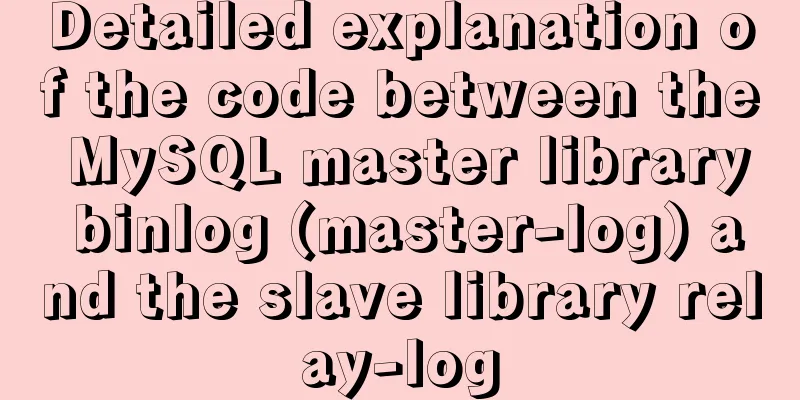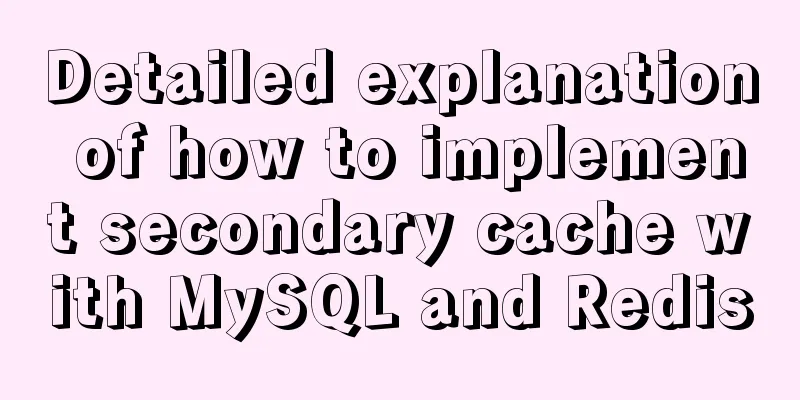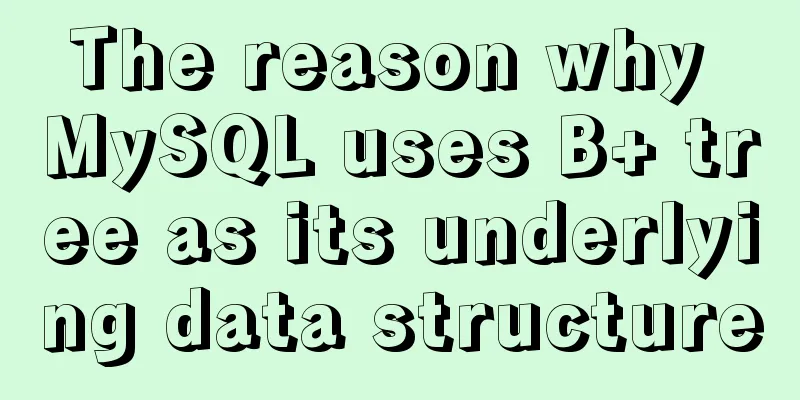Reasons and solutions for being unable to remotely connect to MySQL database under CentOS7

|
Preface I recently encountered a problem at work. I found that I could not remotely connect to MySQL under the Centos7 system. I finally solved it by searching for relevant information. The following method is what I tried after I encountered the problem of not being able to connect to the Mysql database remotely, and it finally solved the problem. So I summarize and share it for reference and learning for friends who encounter the same problem. I won’t say much below, let’s take a look at the detailed introduction. There are two reasons
1. The database is not authorized There is no authorization for the MySQL database, so just one command is enough. mysql>GRANT ALL PRIVILEGES ON *.* TO 'root'@'%' IDENTIFIED BY '123456' WITH GRANT OPTION; //When connecting to the database remotely, you need to enter the username and password Username: root Password:123456 Point to ip:% to represent all IPs. You can also enter IP here to specify IP. To make the changes take effect, you also need the following statement mysql>FLUSH PRIVILEGES; 2. The server firewall does not open port 3306 CentOS has two firewalls: FirewallD and iptables firewall centos7 uses the FirewallD firewall. FirewallD is a front-end controller for iptables that implements persistent network traffic rules. It provides both command line and graphical interfaces and is available in the repositories of most Linux distributions. There are two main differences when using FirewallD compared to controlling iptables directly: 1. FirewallD uses zones and services instead of chained rules. 2. It dynamically manages rule sets, allowing rules to be updated without disrupting existing sessions and connections. FirewallD is a wrapper around iptables that allows you to manage iptables rules more easily - it is not a replacement for iptables. Although iptables commands can still be used with FirewallD, it is recommended that you use only FirewallD commands when using FirewallD. 1. Open port 3306 on FirewallD firewall-cmd --zone=public --add-port=3306/tcp --permanent Command meaning: --zone #scope --add-port=3306/tcp #Add port, format: port/communication protocol --permanent #Permanent, without this parameter, it will be invalid after restart Restart the firewall systemctl restart firewalld.service 2.iptables development port 3306 /sbin/iptables -I INPUT -p tcp -dport 3306 -j ACCEPT /etc/rc.d/init.d/iptables save Summarize The above is the full content of this article. I hope that the content of this article can bring some help to your study or work. If you have any questions, you can leave a message to communicate. Thank you for your support of 123WORDPRESS.COM. You may also be interested in:
|
<<: Sample code for converting video using ffmpeg command line
>>: Complete steps to install FFmpeg in CentOS server
Recommend
The image element img has extra blank space in IE6
When doing DIV+CSS layout of the page, it is very...
Analysis of the methods of visual structure layout design for children's websites
1. Warm and gentle Related address: http://www.web...
The difference between float and position attributes in CSS layout
CSS Layout - position Property The position attri...
Detailed explanation of Truncate usage in MYSQL
This article guide: There are two ways to delete ...
64-bit CentOs7 source code installation mysql-5.6.35 process sharing
First install the dependent packages to avoid pro...
HTTP Status Codes
This status code provides information about the s...
Four solutions for using setTimeout in JS for loop
Table of contents Overview Solution 1: Closures S...
Detailed explanation of how to implement login function by combining React with Antd's Form component
Table of contents 1. React combined with Antd to ...
How to perform query caching in MySQL and how to solve failures
We all know that we need to understand the proper...
js canvas realizes circular water animation
This article example shares the specific code of ...
How to do a good refactoring is not only refactoring the code but also refactoring life
It is really not easy to do a good reconstruction...
How to install Postgres 12 + pgadmin in local Docker (support Apple M1)
Table of contents introduce Support Intel CPU Sup...
HTML implementation of a simple calculator with detailed ideas
Copy code The code is as follows: <!DOCTYPE ht...
Tutorial on installing Docker in Windows 10 subsystem Ubuntu (WSL) (with pictures and text)
Table of contents Environmental Description Insta...
js tag syntax usage details
Table of contents 1. Introduction to label statem...









